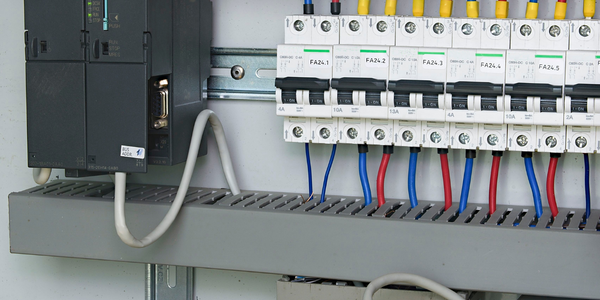
技术
- 分析与建模 - 机器学习
- 分析与建模 - 预测分析
- 功能应用 - 企业资产管理系统 (EAM)
- 功能应用 - 远程监控系统
- 传感器 - 温度传感器
- 传感器 - 电压传感器
适用行业
- 电子产品
适用功能
- 维护
用例
- 预测性维护
客户
施耐德电气
关于客户
施耐德电气在 100 个国家开展业务,拥有 137,000 名员工和 2018 年 257 亿欧元的收入,正在引领能源管理和自动化的数字化转型。公司 90% 的业务都在能源需求上,涵盖 4 月
挑战
施耐德电气位于法国的勒沃德勒伊工厂被世界经济论坛公认为世界九大最先进的“灯塔”工厂之一,大规模应用了第四次工业革命技术。它在制造过程中的关键机器上遇到机器健康和计划外停机问题。他们正在寻找一种能够轻松利用现有机器数据源、机器操作员无需复杂设置或大量培训即可使用且投资回报快的解决方案。
解决方案
最初,施耐德电气对有问题的机器进行了分析,以确定停机的主要原因并评估机器的运行状况。经过分析,他们发现部分原因是更换旧零件的时间很长。为了解决这个问题,施耐德电气开始定期更换组件。然而,只有 18% 的计划外停机时间与组件的使用年限有关。基于此,施耐德电气安装了温度和电流传感器来监控这台关键机器的行为。这些传感器的数据存储在 Aveva Insight 中,然后传递到 Senseye PdM 以根据历史数据进行分析。使用基于机械框架的强大 AI 和 ML 算法,Senseye PdM 能够在机器发生故障之前自动向维护工程师提供警报。例如,在主轴或副主轴断裂之前通知机器操作员,从而将 OEE 提高 7 点。
运营影响
数量效益

Case Study missing?
Start adding your own!
Register with your work email and create a new case study profile for your business.
相关案例.

Case Study
Remote Temperature Monitoring of Perishable Goods Saves Money
RMONI was facing temperature monitoring challenges in a cold chain business. A cold chain must be established and maintained to ensure goods have been properly refrigerated during every step of the process, making temperature monitoring a critical business function. Manual registration practice can be very costly, labor intensive and prone to mistakes.

Case Study
Cloud Solution for Energy Management Platform-Schneider Electric
Schneider Electric required a cloud solution for its energy management platform to manage high computational operations, which were essential for catering to client requirements. As the business involves storage and analysis of huge amounts of data, the company also needed a convenient and scalable storage solution to facilitate operations efficiently.

Case Study
Leveraging the IoT to Gain a Competitive Edge in International Competition
Many large manufacturers in and outside Japan are competing for larger market share in the same space, expecting a growing demand for projectors in the areas of entertainment, which requires glamor and strong visual performance as well as digital signage that can attract people’s attention. “It is becoming more and more difficult to differentiate ourselves with stand-alone hardware products,” says Kazuyuki Kitagawa, Director of Service & Support at Panasonic AVC Networks. “In order for Panasonic to grow market share and overall business, it is essential for us to develop solutions that deliver significant added value.” Panasonic believes projection failure and quality deterioration should never happen. This is what and has driven them to make their projectors IoT-enabled. More specifically, Panasonic has developed a system that collects data from projectors, visualizes detailed operational statuses, and predicts issues and address them before failure occurs. Their projectors are embedded with a variety of sensors that measure power supply, voltage, video input/ output signals, intake/exhaust air temperatures, cooling fan operations, and light bulb operating time. These sensors have been used to make the projector more intelligent, automatically suspending operation when the temperature rises excessively, and automatically switching light bulbs. Although this was a great first step, Panasonic projectors were still not equipped with any capability to send the data over a network.






